Tips & Tricks
Harder or Softer (or why you should get out of the box, & how to do it)

WRITTEN BY: Tony Miln
UPLOADED: 26th Nov 2019

In last week’s blog on whether to buy a vintage or reissue Minimoog Model D (or Behringer Boog) I didn’t compare the myriad softsynth options available. Many might well ask, “Why buy a hardware synth when I can fill my laptop with software versions that are lighter, more flexible and require little maintenance”
So, why should you get out of the box? And how can you do that on a budget?
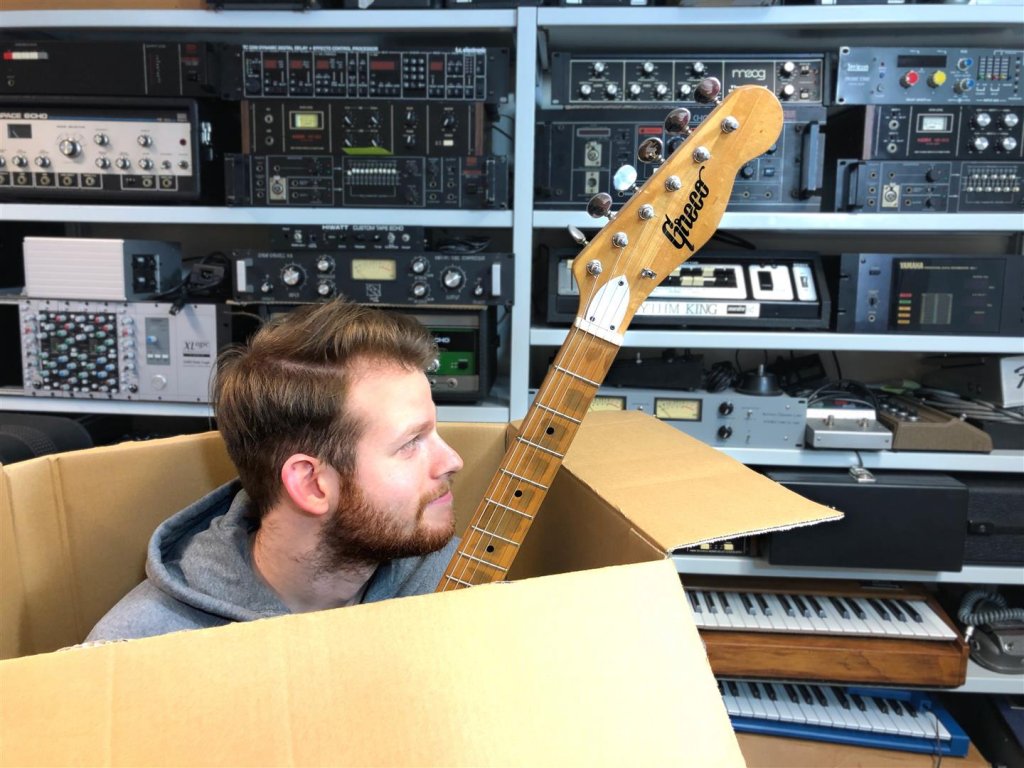
COMPUTERS ARE THE FUTURE…
Of course, some ‘maintenance’ is required for trouble-free softsynth use: ensuring your computer/tablet has enough disk space, memory, power and a functioning OS can seem like stating the obvious, but if I had a pound for every hour I’ve spent updating, installing, troubleshooting computer/DAW issues and software, I’d have enough to buy a very nice vintage Minimoog. The early days of audio recording on computers (as opposed to the early black and white screen era of Midi-based productions on Atari STs – I remember their rock-solid timing fondly) were especially fraught: ensuring all the various elements of your setup would communicate and function correctly could take days. Once you had it all running smoothly, inevitably there’d be a software or driver update soon after that would then throw everything into disarray once more. You soon learned not to mess with a functioning system and it was common for music computers to be an OS generation or two behind the latest version. Early adopters paid heavily in lost time, hair, and frayed tempers…
Fast forward to now and things are definitely improved, but I’m not sure any seasoned pro audio users leap to install the latest Mac OS on their system: I certainly prefer to wait until teething problems have been ironed out by those more impatient than I. I can wait a little longer for ‘essential’ new features if it means spending less time scouring a forum to find out why my software no longer recognises old projects, or re-imagines them in a different key, tempo or sample rate.
As someone who has devoted most of my working life to endeavours of a musical nature, having long ago tasted the monotony of an office job, the irony is not lost on me that, no matter what my intent, I end up spending a great deal of time staring at a screen. In the 90s it was all about moving towards working in the box – something I partially fought valiantly against by refusing to stop buying broken old pieces of gear (look how that panned out: Ed) – yet the convenience and speed of computer audio soon meant my 8 track Tascam grew dusty and the mouse increasingly took over from knobs and sliders. Even my day (OK, night) job playing vinyl succumbed in the noughties and I was seduced into only needing a pair of records and laptop for gigging (CDJs weren’t the same – and although the tech has moved on considerably the feel of vinyl was and remains, for me, an essential ingredient in the pleasure of DJing); but in needing to know the name and BPM of the next track, rather than the shape/colour of the record’s label, something was lost.
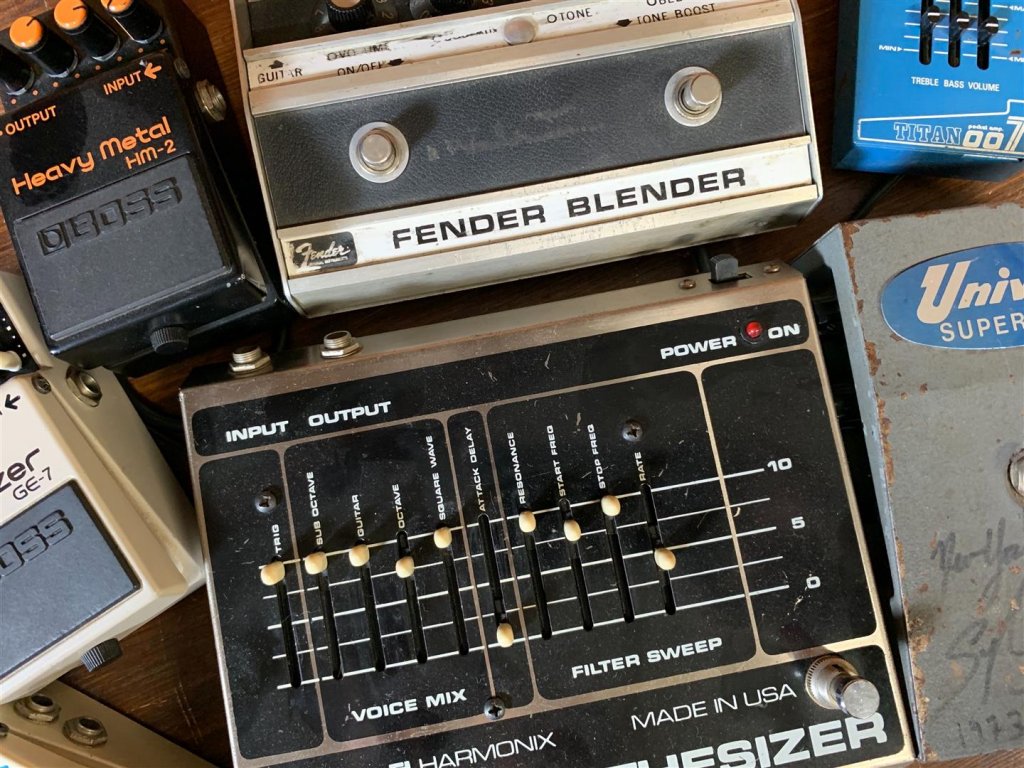
GET LOST!
The ability to perform without conscious thinking and ego – to feel, rather than think, your way – is at the heart of the software/hardware debate. State of flow is hard to achieve with left brain fully-engaged navigating a list of songs via trackpad: ditching two heavy record bags for a laptop and time-coded vinyl might’ve been good for my back, and for travelling light, but my enjoyment and performances suffered.
As a child of the sixties (just) and seventies, images of (mostly) guitarists with eyes closed and heads thrown back, lost in the aether, were compelling. I’m not sure Jimi would’ve had the same look on his face if he’d had to contend with the spinning beachball of death mid-performance. Pre-acid house, the only instrument I could play with other musicians without thinking was the harmonica (having tried and failed to become adept on piano, guitar and bass) and even then I was limited in the musical forms I could handle: sadly, I’m no Stevie Wonder. I found that same feeling DJing – losing myself in the mix, becoming one with turntables, vinyl, mixer: letting the energy of the crowd show the way – records rising out of the box seemingly of their own volition. To really play well, you do need to leave your ego at the door (one of the reasons coke is not a good weapon of choice for DJs) and really let go. It’s an addictive feeling, whatever your instrument, and one that is hard to live without, once experienced.
These days I seldom play the harp, and DJ almost as rarely, but I still lose myself – in hardware. Testing and demoing for Soundgas, a simple two or three minute session can easily expand into a half-hour (or more): playing the machines – beats, echoes, synths and effects – state of flow comes naturally and effortlessly. And this is why hardware matters, and why vintage hardware is especially important to me: old hardware was made before accountants took over, by enthusiasts and boffins whose prime motivation was the sound and the players’ pleasure in using their instruments and effects. One knob per function, no menus or arcane hidden facilities: everything laid out clearly and ergonomically so fingers can explore without unnecessary conscious thought. When sound and processes are pleasurable and instinctive, the mind can wander and ego takes a backseat; and magic happens.
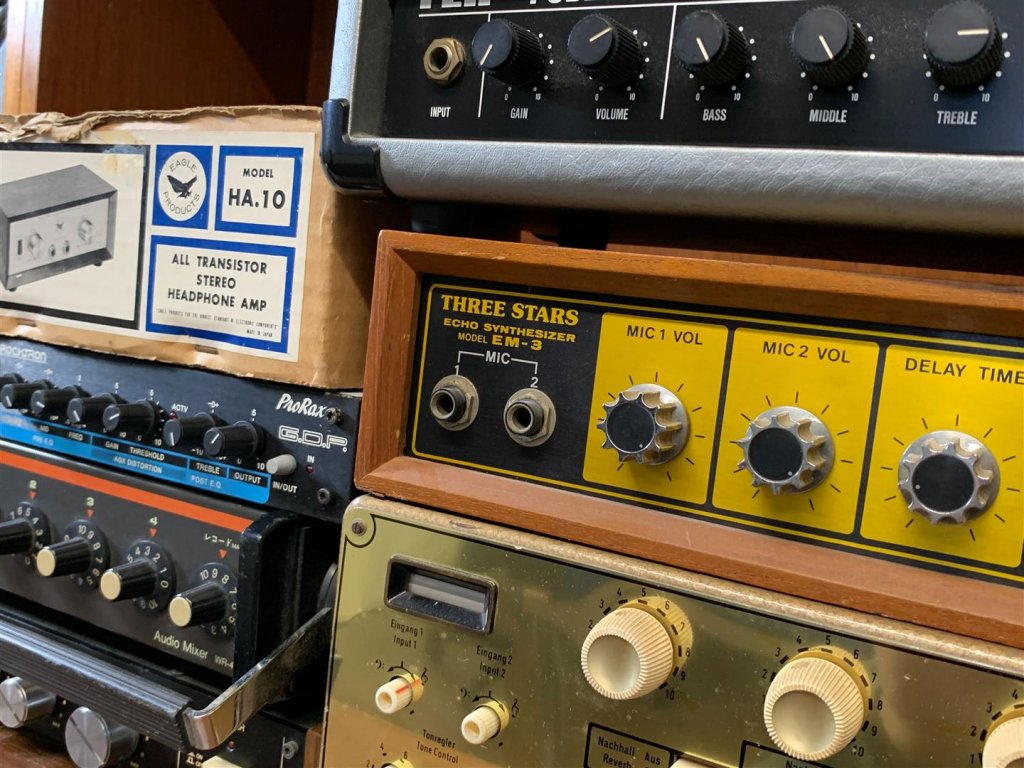
Often, when I explain what we do at Soundgas, people ask ‘is there still a demand for old equipment?’ or ‘surely the new stuff is better?’ and I patiently explain what makes old hardware worth the considerable effort of sourcing, restoring and sending it worldwide. But, however I approach it, my answer always comes down to three essential ingredients.
⊕ The sound: this stuff just sounds ‘right’ in a way that much modern gear and software rarely does, without extra processing – we’ve grown up hearing music made with these sounds and this gear and it’s immediate and unmistakeable.
⊕ The feel: the pleasure of using your hands and playing something made by and for human beings (with adult-size hands/fingers: so many modern units – Boog included – are manufactured to Lilliputian scale).
⊕ The vibe (or whatever you want to call it…): an ethereal quality that’s hard to describe in words but you know when it’s with you: instruments that speak to you; that play you as much as you play them; that inspire you to create something special, and lead you to a place you’d not otherwise reach.
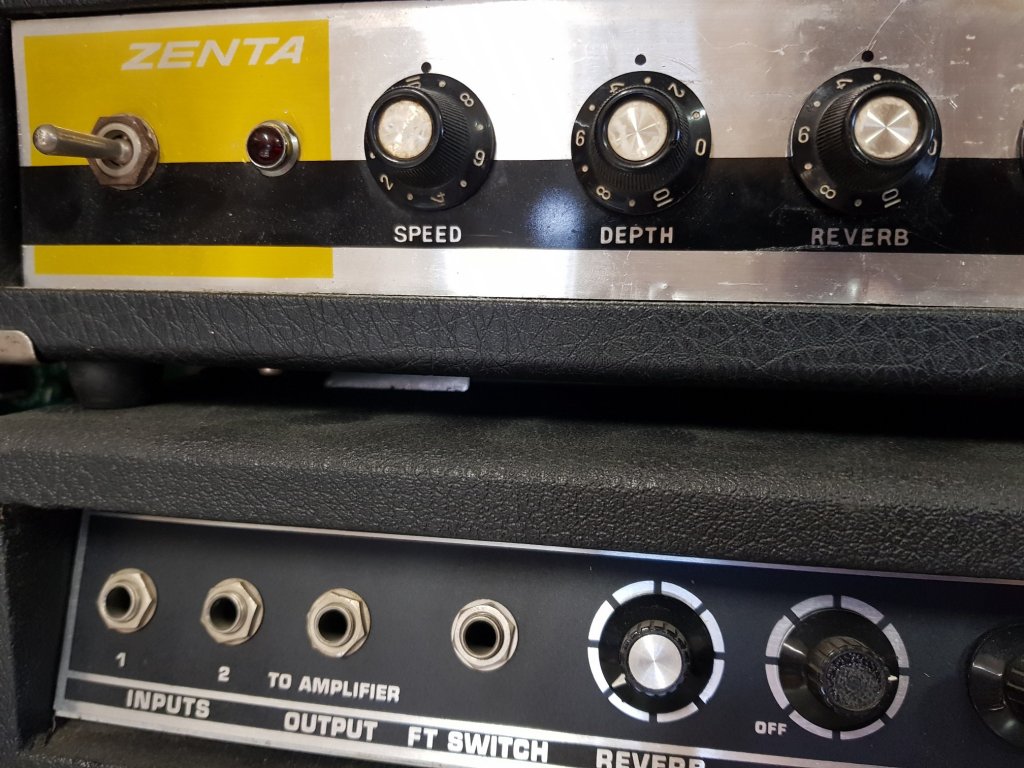
All vintage gear is different: wears its flaws, foibles, ageing components, and history, with honour – it has and is character. Something no software emulation is likely to match for some time – you can’t model how every vintage Moog or tape echo behaves, so everyone is using the same algorithms, identical sounds, repeated perfectly and without variation every time. The antithesis of character: not that you can’t create amazing and compelling music using those tools – the craftsperson weaves wonder with whatever is to hand – but you have to work harder to sound distinctive, to rise above the rest of the crowd who begin with the same building blocks.
And hardware doesn’t have to mean expensive: the old Hawk spring reverbs that we love are incredibly vibey and some can be had serviced/restored for less than a Boog. For years, when I could only dream of racks of vintage processors, I recreated those effects using a handful of old guitar pedals. Can’t afford a tape delay? Use a digital delay or plugin and record the result onto cassette/dictaphone and send that back into the mix. Hardware distortion and overdrive nearly always sounds better than ITB: again guitar pedals are your friends, or use cheap/broken things – old battery powered mic preamps, hifi, anything with an input you can drive and record the result.
One of our engineers was working on a session in the Soundgas Studio for a client: I walked in and was horrified to see he’d plugged in a broken tape echo (that had no tape and had only been put on the shelves for a photo shoot): “But it doesn’t work!” said I. “I know, but listen to the amazing distortion,” came his reply. And he wasn’t wrong. If you’re short of cash, watch auctions (including our ebay account where we regularly clear items we haven’t got time to repair), scour thrift/charity shops, car boot/yard sales and pick up stuff to experiment with. But do be careful – anything with mains power should be checked for safety first. Cheap old valve radios, reel to reel recorders – much valve gear can sound fabulous when driven hard, but it can also be very dangerous due to the voltages present, so do be careful! On the other hand, anything with 9v battery power isn’t likely to do you any harm…
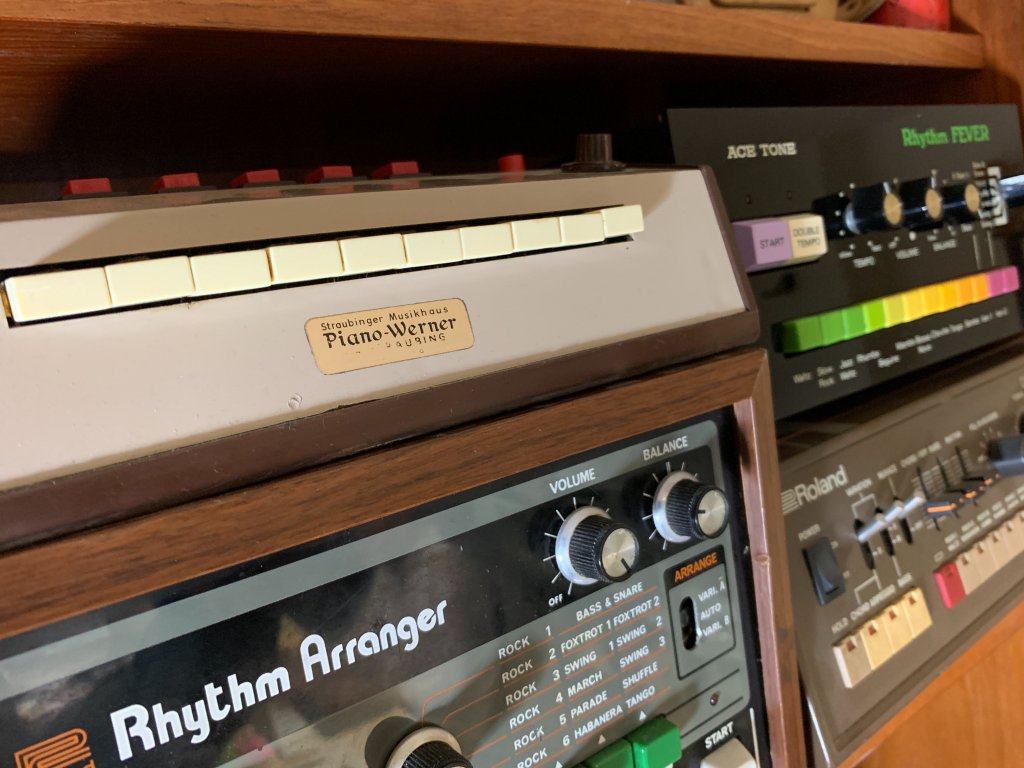
CONCLUSION?
The journey: it’s all about the journey, not the destination. That’s what hardware, and especially vintage hardware, means to me. It’s about the tactile pleasure, a seduction of touch rewarded with sounds enveloping, embracing, with warm delight. That keyboard or guitar or drum machine that, while sounding like a recording you love, in your hands becomes something else: intoxicating, enthralling and unmistakably different – your sound.
Below are a few of my favourite shoestring hacks with hardware (in the sense of misusing/abusing gear, rather than circuit bending – which is a whole other can of worms/wires for another time).
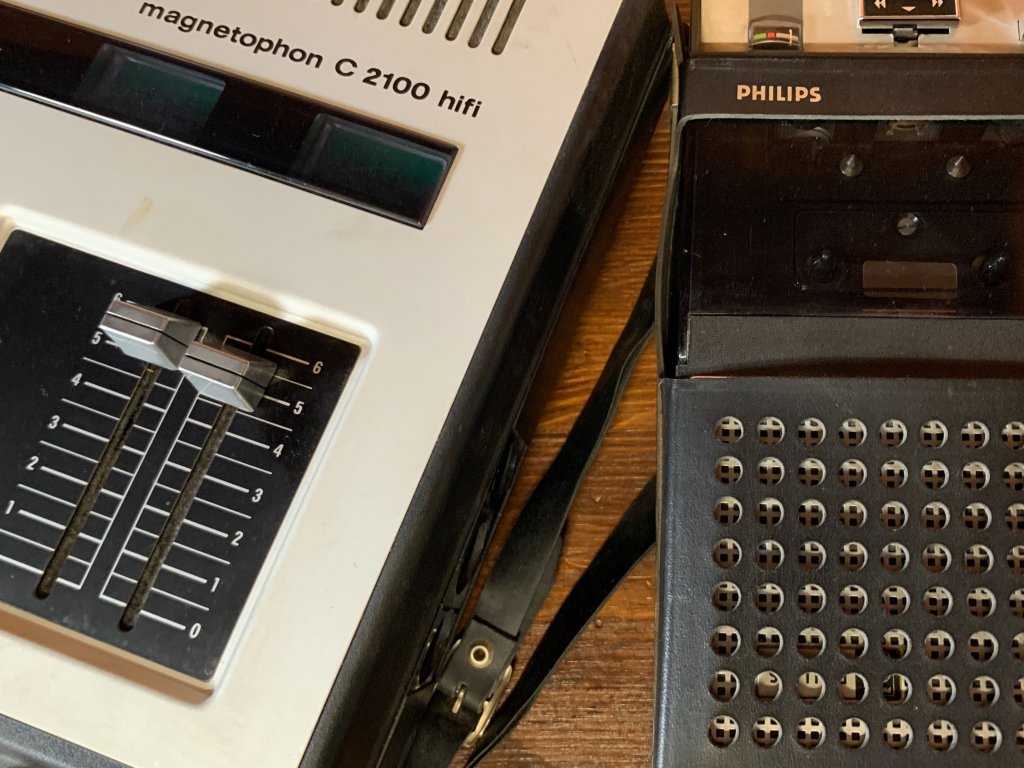
TOP FIVE HARDWARE HACKS:
⊗ Cheap tape – cassette recorders, dictaphones, old reel to reels – instant character and vibe. And even if the tape doesn’t turn, you may find the inputs overload agreeably.
⊗ Drive, drive, drive! Anything old with an audio in – see what results by deliberately overloading the input: it’s how we found our love of Hawk Spring Reverb overdrive, and further back, how Pete Townshend found guitar distortion for The Who in his Grampian Type 636 Spring Reverb.
⊗ Pedal to the metal: old guitar pedals (and many new ones) can do insane things to your pristine recordings. Many unobtanium effects can be (sort of) replicated with a handful of guitar pedals and some imagination. Take a wah, fuzz, octave and phaser and build your own modular EMS Synthi Hi-Fli…
⊗ Machine beats: old beatboxes can be cheap and can be very vibey (broken ones even have timing like a real drunken drummer). Sly Stone, Blondie, Phil Collins, Suicide – many diverse artists have harnessed the power of a humble latin beatbox to add vibe or inspiration.
⊗ Big and ugly. If you’re not short of space, look out for ads/auctions for large items that are too big for couriers – old home organs can be filled with cool modulation effects (eg The Who ‘Baba O’Riley’), sounds, spring reverbs, leslie speakers, beatboxes. Leslie/rotating speakers are amazing mic’d up (cheap option use your phone to record the results). Big old valve pa/guitar amps/speakers can be had cheap (again watch out for electrical safety): in the UK, Carlsbro stuff from the sixties/seventies can give Marshall/Vox a run for their money…
And for those wondering if we have any gear for sale ripe for this sort of misuse available currently, we recommend looking at Hawk reverbs, and vintage Roland mixers. and of course our guitar pedal section features many chosen specifically for their abilities to warp and work wonders on all kinds of sources. We do also have various other strange, cranky and/or cheaper things available from time to time (often bought to try out, or sifted from the studio Dirt collection when it gets out of hand) – they tend to be sold either via our instagram posts, or our ebay account.
Related Resources
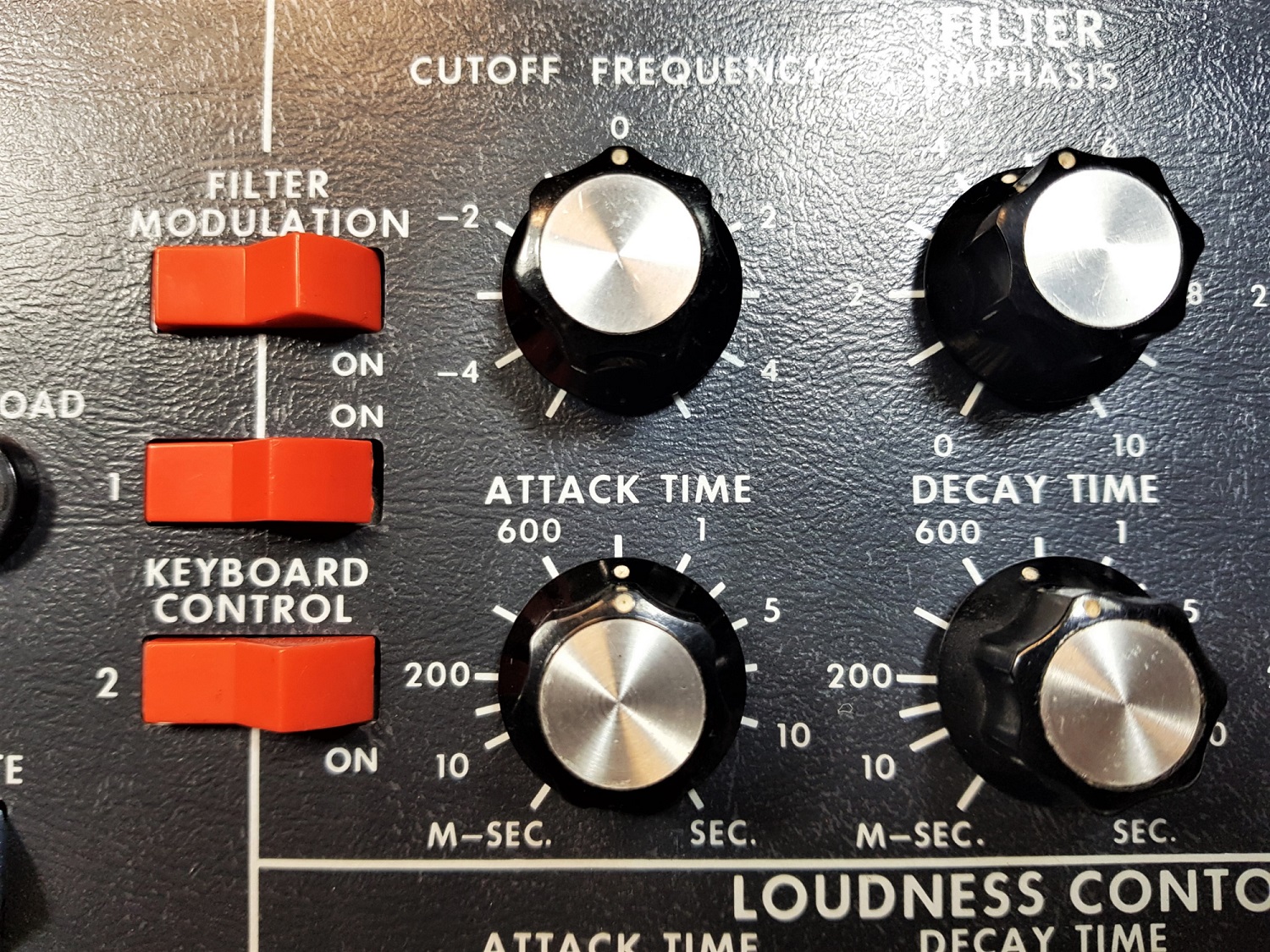
Gear feature
Which Minimoog? Vintage, Moog Reissue or Behringer Model D?
Our answer to two questions we are often asked about vintage Minimoogs: "Should I buy a vintage Minimoog or the reissue Moog Model D?" and "Why buy an...

Roland Tape Echo Tips, Tricks & Tales
Some of the nuggets of wisdom we've picked up as we've overhauled, tested & sold hundreds of tape echoes, as well as using them in our...

